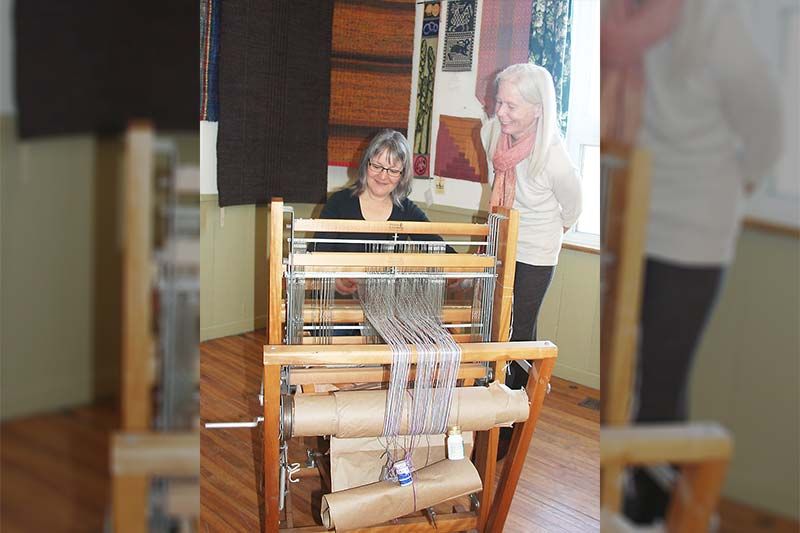Craig Bakay | Apr 11, 2018
Blankets, rugs, towels, scarves and bags of various patterns and colour combinations adorn the walls of the big room at MERA (McDonalds Corners-Elphin Recreation and Arts) on this particular Saturday.
Master Weaver Ellen Good and her cohort, Wendy Phillips are engaged in a search for a small ‘S’ hook that has escaped them as they hang the final piece of the display.
“Most of the designs we use are public domain,” Good says. “But it’s how the weaver sets up the loom — tight or loose — and the colours they use that make the difference.
“Weaving is technical and it takes time.
“There’s a lot of measuring and cutting.”
Good should know. She’s been weaving for some 40 years and was the weaver at Upper Canada Village for five years. Just listening to her describe the process rivals many lectures on quantum mechanics.
“The threading part is the most important,” she said. “Most weavers don’t want people bothering them when they’re threading the loom.”
Seems like a lot of brainwork so why would someone want to do this?
“There are a variety of looms available,” she said. “And the patterns are kind of like a musical score.
“Two weavers can be working on the same draft but with completely different interpretations and completely different results.”
Ah, so it’s an art then.
“We did have a group, the MERA Touring Weavers, but that was more historical,” she said. “Now we’re more just interested in personal weaving.”
So, there’s a preserving history aspect to it.
And, perhaps most importantly, there’s very useful end results.
“We don’t just sit around and talk,” Good said. “And weaving at home can be pretty solitary.”
Group weaving can lead to inspiring each other and providing ideas for each other.
“What’s popular to make comes in phases,” she said. “In winter, there are a lot of scarves made.
“But if a baby’s coming — winter or summer — you do baby blankets.”
“There’s math, planning, social benefit and end results,” said Phillips. “It’s not just for matures, we’d like to pass the skills on to the younger generation.
“It’s a lot like growing food (and) it’s lovely to know how to make things.”
“It had a lot to do with the economic development of women and girls in Upper Canada,” said Good.
The MERA Weavers have about a dozen members who get together at the old schoolhouse on Thursday morning to weave and share thoughts and techniques.
They’d like to share them with more people so membership is open to everyone.
“Basically, if you show up on a Thursday, someone will mentor you,” Good said. “And I’d like to point out that traditionally, men were weavers.”
The weaving show will be on display every Saturday in April.
More Stories
- Line Spike Frontenac Loses Liquor License at the Last Minute - selling bottled water to recoup losses
- Frontenac Business Services Celebrates at AGM
- NAEC Grad Borger Sines Smith Scholarship From Queen's Engineering
- Opening Week For SL Farmers Market
- Snack Time Gets a Boost from ‘After the Bell’
- Railway Heritage Society to Add Vintage Caboose to Collection
- Frontenac County Council - June 18
- South Frontenac Council Report - June 10
- Limestone Student Achievers
- North Frontenac wins grant sweepstakes and will upgrade Clar Mill Rink
